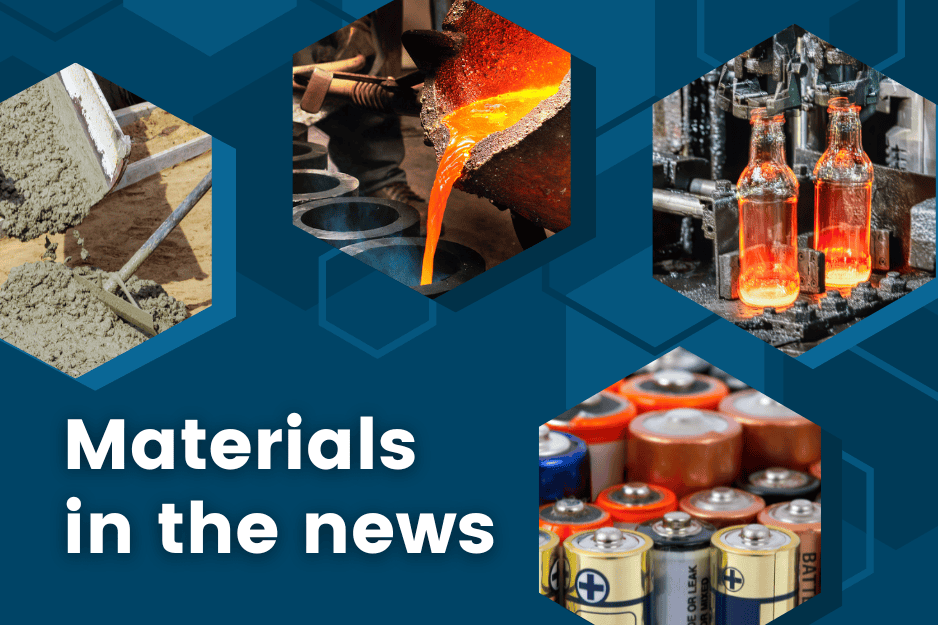
[Images above] Credit: NIST
NANOMATERIALS
Study calls graphene’s thermal properties into question
Purdue University researchers theoretically showed that four-phonon scattering is the leading scattering channel in graphene rather than three-phonon scattering, meaning its thermal conductivity would not only be less than diamond but also raw graphite.
New understanding of oobleck-like fluids contributes to smart material design
University of Chicago researchers used piezoelectric nanoparticles to investigate the fundamental physics of non-Newtonian fluids. They discovered a key role for friction between particles in causing the materials to flip from a fluid to a more solid structure.
Brainstorming with a bot: Researcher develops chatbot with expertise in nanomaterials
Kevin Yager at Brookhaven National Laboratory developed a chatbot that is knowledgeable in areas of nanomaterial science. To ensure the chatbot’s accuracy, he used a process called embedding to categorize and link information quickly behind the scenes.
Placing nanoparticles in the palm of your hand
Anne Bentley at Lewis & Clark College created 3D models of the simplest geometric shapes that nanoparticles form. She has made the instructions for creating these models, either with paper or 3D-printing material, available as part of an article she coauthored with Sara E. Skrabalak of Indiana University Bloomington.
ENVIRONMENT
Experts revive ancient techniques to make concrete more sustainable
Researchers from École polytechnique fédérale de Lausanne, ETH Zurich, and a Geneva-based architecture firm have developed a new type of nonreinforced concrete made from stone offcuts. Their method, which reduces the use of carbon-intensive cement-based binders, draws on ancient techniques uncovered in historical archives.
Recycling concrete using graphene can reduce emissions and waste
Researchers at Flinders University and the University of Melbourne showed that old broken concrete can be upcycled as coarse aggregate to produce strong, durable, and workable concrete, as long as a small amount of graphene is added.
Greener solution powers new method for lithium-ion battery recycling
Oak Ridge National Laboratory researchers soaked spent batteries in a solution of organic citric acid, which allowed them to leach nearly 100% of the cobalt and lithium from the cathode without introducing impurities in the system.
MANUFACTURING
Graphene oxide study strengthens the case for smart concrete
Researchers at RMIT University and the University of Melbourne investigated the effects of graphene oxide on the printability and compressive properties of 3D-printed concrete. Graphene oxide increased the strength of concrete by up to 10%, but adding too much impacted the strength and workability of the concrete mix.
Lightweight insulating building elements from a 3D printer
ETH Zurich researchers are using 3D printing to produce lightweight insulation building components from cement-free mineral foams derived from recycled industrial waste.
Insights into solute transport and solidification mechanisms in additive manufacturing
Researchers at Queen Mary University of London, along with Shanghai Jiao Tong University, Centre of Excellence for Advanced Materials, and the University of Leicester, developed a computational model to reveal how solute trapping occurs during the rapid solidification process in additive manufacturing.
iLAuNCH project to revolutionize optics for Earth observation with additive manufacturing
Through the iLAuNCH Trailblazer project, the University of South Australia, VPG Innovation, UNISQ, UniSA, Stärke-AMG, and SMR Australia will mature and space-qualify new freeform optics technology and materials for space flight applications and Earth observation. Results will be demonstrated via a camera that uses additive manufacturing capabilities.
OTHER STORIES
Diamonds and rust help unveil ‘impossible’ quasi-particles
University of Cambridge researchers used diamond quantum sensing to observe swirling textures and faint magnetic signals on the surface of hematite. They observed that magnetic monopoles in hematite can emerge through the collective behavior of many spins, or the angular momentum of a particle.
2D material reshapes 3D electronics for AI hardware
Researchers led by Washington University in St. Louis demonstrated monolithic 3D integration of a layered 2D material into novel processing hardware for artificial intelligence computing. The device contains six atomically thin 2D layers, each with its own function.
Limestone putty nanogenerator to harvest energy from everyday motion
Researchers at the University of Alabama in Huntsville created a new kind of triboelectric nanogenerator that produces electricity through the use of limestone putty.
Bidding adieu to sticky ice, but with a grain of salt
Researchers at the University of Illinois Chicago found that impure ice was more slippery than ice made from pure water under certain conditions. The slipperiness is due to a liquid layer that forms when impure water freezes and expels contaminants that drain along channels and ice-grain boundaries toward the ice base.
Project will look for rare earth elements in Southeast Alaska seaweed
Researchers led by the University of Alaska Fairbanks were awarded a $1.9 million federal grant to explore whether seaweeds are absorbing rare earth elements near a rich deposit in Southeast Alaska.
Author
Lisa McDonald
CTT Categories
- Weekly Column: “Other materials”
